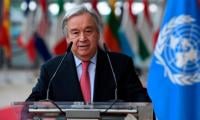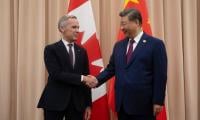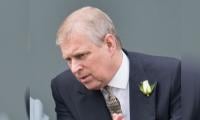Rupee depreciation to keep inflation upward
KARACHI: The central bank on Friday raised its key benchmark interest rate by 50 basis points to a six-year high of 10.75 basis points as lagged impact of rupee depreciation is likely to keep inflation upward, while twin deficits continue to warrant stabilisation measures.
“Sustainable growth and overall macroeconomic stability requires further policy measures as underlying inflationary pressures continue; the fiscal deficit is elevated, and despite an improvement the current account deficit is still high,” the State Bank of Pakistan (SBP) said in its March policy statement. “In this backdrop and after detailed deliberations, the MPC (monetary policy committee) decided to increase the policy rate by 50 bps (basis points) to 10.75 percent effective from 1st April 2019.”
The SBP shunned its soft monetary policy stance in January 2017 and since then it cumulatively raised the key benchmark interest rate by 500 basis points. The SBP lowered interest rate by 150 basis points to 10.5 percent in August 2012.
Fawad Khan, head of Research at brokerage BMA Capital said runaway fiscal deficit continues to weigh on policymakers. “The central bank likes to keep itself ahead of curve,” Khan added. “The latest move is one such attempt to rein in inflation expectation as further policy action on exchange rate (further devaluation) and fiscal (power tariff hike and energy cost) is undertaken.”
The SBP’s policymakers forecast headline consumer price index inflation to fall in the range of 6.5 to 7.5 percent for the current fiscal year.
Average consumer inflation reached 6.5 percent in the July-February period of FY2019 compared to 3.8 percent recorded in the corresponding period a year earlier. Annual consumer inflation, however, considerably rose to 7.2 percent in January and further to 8.2 percent in February – the highest year-on-year increase since June 2014.
The SBP said core inflation maintained its 13-month upward trajectory accelerating to 8.8 percent in February 2019 from 5.2 percent a year earlier.
“Further, rising input costs on the back of higher energy prices and the lagged impact of exchange rate depreciation are likely to maintain upward pressure on inflation despite a moderation in aggregate demand due to a proactive monetary management,” the SBP said.
Rupee has lost 33 percent of its value against the US dollar since 2017.
The State Bank expected the target for the fiscal deficit in FY2019 to be breached, “in view of the shortfalls in revenue collections and escalating security related expenditures”.
“So far a significant portion of the fiscal deficit was financed through borrowings from SBP, which if continued, will not only complicate the transmission of monetary policy but also dilute its impact and prolong the ongoing consolidation efforts,” the central bank said. In July-December, the fiscal deficit was higher at 2.7 percent of GDP when compared with 2.3 percent for the same period last year.
The government borrowed Rs3.3 trillion from the SBP and retired Rs2.2 trillion of its borrowing from scheduled banks between 1st July and 15th Mar FY2019.
“This in turn, facilitated the banks to meet private sector credit demand that increased by 9.2 percent without putting pressures on the market interest rates,” the central bank said.
The State Bank said financing of current account deficit is still a challenge despite that it narrowed around 23 percent to $8.8 billion in the July-February period “owing to stabilisation measures”.
“Though still posing a significant challenge in term of its financing, the narrowing of the current account deficit has translated into some stability in the foreign exchange market,” the SBP said.
“While the reserves are still below the standard adequacy levels (equal to three months of imports cover), the recent improvement on the external front has nevertheless improved business confidence.”
The central bank projected a real gross domestic product growth to be around 3.5 percent in FY2019.
“Amidst the efforts to curtail inflationary pressures and reduce the otherwise widening macroeconomic imbalances, domestic economic activity experienced the brunt of the stabilisation measures implemented thus far.”
Brokerage Topline Securities said the hike in interest rate comes just after this week’s visit of the new country chief of the International Monetary Fund (IMF).
“The path to IMF program is always dotted with painful stability measures and the upcoming program is no different,” Khan of BMA Capital added.
-
 Fire Causes Power Outage On Tokyo Train Lines, Thousands Stranded As ‘operations Halted’
Fire Causes Power Outage On Tokyo Train Lines, Thousands Stranded As ‘operations Halted’ -
 YouTube, BBC To Ink Landmark Deal To Launch Exclusive Bespoke Shows
YouTube, BBC To Ink Landmark Deal To Launch Exclusive Bespoke Shows -
 Meghan Markle Turning Prince Harry's Invictus Games Event Into 'bad Fashion Show'
Meghan Markle Turning Prince Harry's Invictus Games Event Into 'bad Fashion Show' -
 TikTok To Roll Out New Age Detection Technology Across Europe
TikTok To Roll Out New Age Detection Technology Across Europe -
 Tom Brady Explains How Divorce With Gisele Bündchen Affected His NFL Career
Tom Brady Explains How Divorce With Gisele Bündchen Affected His NFL Career -
 Taiwan, TSMC To Expand US Investment: A Strategic Move In Global AI Chip Race
Taiwan, TSMC To Expand US Investment: A Strategic Move In Global AI Chip Race -
 UN Chief Lashes Out At Countries Violating International Law; Warns 'new Geopolitics' Could Jeopardize World Order
UN Chief Lashes Out At Countries Violating International Law; Warns 'new Geopolitics' Could Jeopardize World Order -
 Carney Meets Xi In Beijing: Key Developments Revealed In The New Canada-China Trade Roadmap
Carney Meets Xi In Beijing: Key Developments Revealed In The New Canada-China Trade Roadmap -
 WhatsApp Adds New Status Privacy Check For Who Can See Your Updates
WhatsApp Adds New Status Privacy Check For Who Can See Your Updates -
 Prince Harry Takes On Dangerous Mission In 2026
Prince Harry Takes On Dangerous Mission In 2026 -
 Trump Accepts Nobel Peace Medal From Machado: What It Means For Venezuela Politics?
Trump Accepts Nobel Peace Medal From Machado: What It Means For Venezuela Politics? -
 Late-night Snacking Linked To Higher Risk Of Liver Disease
Late-night Snacking Linked To Higher Risk Of Liver Disease -
 John Mellencamp Gives Update On Daughter Teddi's Health Struggles: 'She's Suffering'
John Mellencamp Gives Update On Daughter Teddi's Health Struggles: 'She's Suffering' -
 ‘Disturbing Developments’ Start To Follow Prince William, Kate: ‘This Has The Makings Of A Crisis’
‘Disturbing Developments’ Start To Follow Prince William, Kate: ‘This Has The Makings Of A Crisis’ -
 Pamela Anderson Breaks Silence On Fallout With Ex-Tommy Lee: 'I Miss Him'
Pamela Anderson Breaks Silence On Fallout With Ex-Tommy Lee: 'I Miss Him' -
 Andrew Warned: ‘You’re Gonna Add Your Own Final Nail In The Coffin Of Reputation’
Andrew Warned: ‘You’re Gonna Add Your Own Final Nail In The Coffin Of Reputation’



